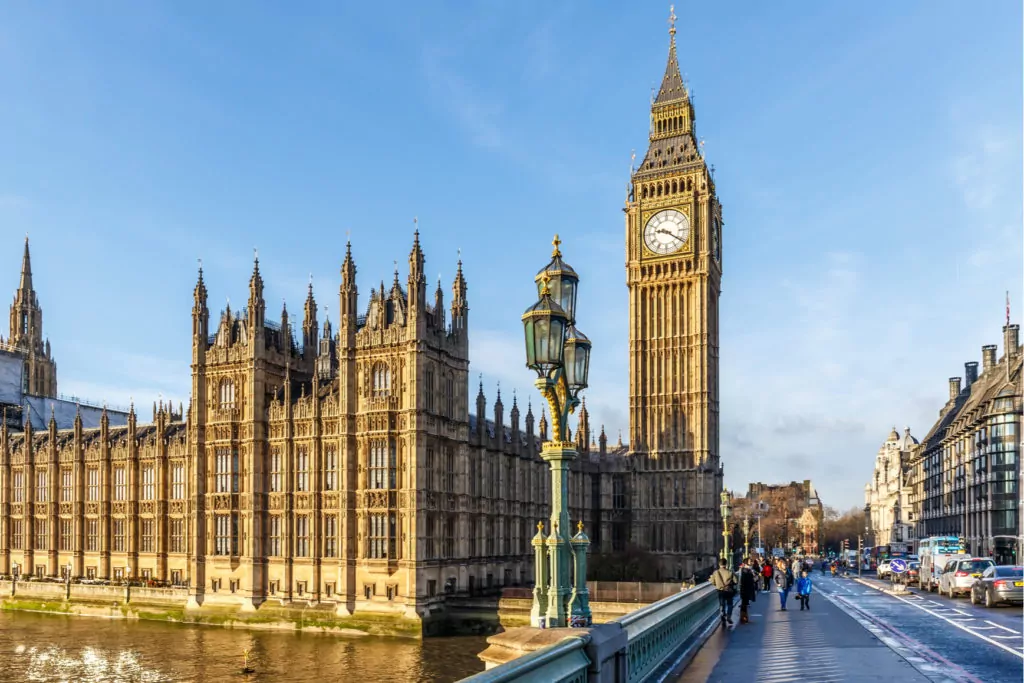The ‘bigger picture’ issues affecting the acquisition, management and disposal of land and buildings, from small projects through to large-scale complex mixed-use development.
Developer
Our horizon scanner provides clarity on the legal and regulatory changes which lie ahead for developers so that you can plot your course with confidence.
Move through each area to see the key dates and upcoming changes which will be of interest to support your business. Please get in touch with our team if you would like to discuss further.
Planning and environmental matters are constantly evolving, affecting strategic planning and consenting strategies and the ability to get development projects off the ground.
Navigating the complexities of the construction industry means managing and resolving risk is essential to the successful delivery of development projects, from inception to completion.
The prospect of real estate disputes, now or in the future, can prove costly in terms of lost opportunities, revenue and even reputation. Whether you’re an investor or a developer, a housebuilder or a retailer, a charity or a farmer, the way you manage your land and property is fundamental to how you operate.
The renewable energy sector and the delivery of low carbon projects is now core to development – from retrofitting of existing housing stock, provision for electric vehicles and consideration of battery energy storage, to district heat networks and contracts relating to energy services.
Facilitating investment and development finance transactions and joint ventures is key to the ability to deliver development projects.
No matter the size or stage of your business, employment and HR advice and training is critical. Being proactive and operating strategically creates a positive business asset that can actively help you achieve your strategic goals.
Property technology, data protection, compliance and risk strategy, are fundamental to success in an ever-evolving world.
Land
In our view notable land issues for developers to look out for across 24/25 include:
- Implementation of the publication of contractual control agreements in the Levelling Up and Regeneration Act 2023;
- Residential leasehold reform;
- Potential changes to the minimum energy efficiency standards; and
- Reform of the Landlord and Tenant Act 1954.
Please check the horizon scanner entries for more details.
The Levelling Up and Regeneration Act 2023 (“LURA 2023”) included requirements for disclosure of contractual rights over land in England and Wales. Secondary legislation will determine how the information will be requested but the requirements for disclosure will include key information such as the type of agreement, the parties involved, the date of the agreement and details of the solicitors involved in the transaction. This will impact certain land agreements including option agreements, conditional contracts and promotion agreements. The Government consulted on draft regulations seeking views on the implications of collecting and publishing information on contractual control agreements. The consultation closed in March 2024.
Potential disclosure requirements in relation to contractual control agreements will mean that parties to such documents will have to supply more potentially sensitive commercial information. This will also cause further administrative steps for developers and their advisers to correctly file information in line with regulations. If information is not provided or false information is given knowingly or recklessly, this could constitute a criminal offence under LURA 2023 which carries a maximum of 2 years imprisonment and an unlimited fine.
Given the change in Government, it is not yet clear whether these proposals will still be implemented.
As also mentioned under the Disputes section, the Leasehold and Freehold Reform Act 2024 (“LFRA 2024”) received Royal Assent in the wash up period of the last Parliament in May 2024. Most provisions have not yet come into effect and secondary legislation is awaited. From a transactional perspective, LFRA 2024 amends the law for houses and flats owned on leases of more than 21 years. With some exceptions it will ban new leasehold houses, it increases the standard lease extension term for leasehold dwellings and brings in other tenant protection provisions.
For further details of the changes, please refer to our article Leasehold and Freehold Reform Act Published | Foot Anstey
The King’s Speech included a draft bill which will enact further reforms to abolish leasehold and reinvigorate commonhold as well as confirmation that they will implement LFRA.
In 2021, the Government proposed to raise the minimum energy efficiency standard to C by 2027 and B by 2030. The government has since abandoned the requirement for an increasing minimum energy efficiency standard for domestic (that is, residential) properties but the position for commercial property is less clear. The Government is yet to confirm whether the original plans will be implemented. Developers will want to know whether existing property is exempt under the proposed changes and may consider undertaking works to improve their EPC rating in the long term. They will also want to know the standard to which new properties must be constructed.
The Law Commission is reviewing Part 2 of the Landlord and Tenant Act 1954 (‘the 1954 Act’) with a view to ensuring it is suitable in for the modern commercial leasehold market. The 1954 Act gives tenants security of tenure with an automatic right to renew their lease on expiry of the contractual term though the parties can (and often do) agree to contract out of the arrangements. Changes to the 1954 Act could be relevant to developers in their strategy to obtain vacant possession of commercial properties and a consultation paper is expected in Autumn 2024.
In Davies (Respondent) v Bridgend County Borough Council (Appellant) – The Supreme Court the Supreme Court considered whether the diminution in value of a residential property was caused by the Council’s failure to treat Japanese Knotweed on their adjoining land. The Court held that the diminution in value of the residential property would have occurred in any event so there was no link between the impact on value and the Council’s delay in treating the problem, once they were aware of it. The case is a reminder that the presence of Japanese Knotweed impacts property value even if it is being treated. There is still potential liability in nuisance if a landowner is aware of and does not treat Japanese Knotweed and it spreads to adjoining land.
Planning
In our view notable planning issues for developers to look out for across 24/25 include:
- Planning policy proposals following the general election 2024;
- The mandatory Biodiversity Net Gain requirement which is now in force; and
- The impact of the change to time limits for enforcement action.
Please check the horizon scanner entries for more details.
Following the election, the Labour government’s plans were set out in the Chancellor’s speech on 8 July and in the King’s Speech. A Planning and Infrastructure Bill proposes to speed up and streamline the planning process for housebuilders and major infrastructure projects. It will also change compulsory compensation rules for landowners. The aim is unlocking development sites. This will assist with delivery of Labour’s ambitious manifesto target of 1.5million new homes – a significant increase with actual housing delivery over the last 30 years. It may also deal with the manifesto pledge that Labour is also committed to preserving the green belt whilst taking a strategic approach to release land to build more homes in the right places, particularly through the release of lower quality ‘grey belt’ land. An English Devolution Bill will devolve more powers out of Westminster into local leaders including some powers relating to housing and planning. They also intend to reform the NPPF including restoring mandatory housing targets with a consultation running from Tuesday 30 July to Tuesday 24 September.
From 12 February 2024, the mandatory requirement for developers to provide biodiversity net gain (BNG) came into force. This is implemented via a planning condition requiring at least 10% BNG for new planning applications for development under the Town and Country Planning Act 1990 that results in loss or degradation of habitat. BNG for small development sites (of between one and nine dwellings) now applies as from 2 April 2024. Developers will need to engage with this requirement for all future developments and implementation will now start to impact developments.
The time limit for enforcement action has been extended from four years to ten years for operational development and change of use of any building to a single dwelling house in England effective from 25 April 2024.
Section 115 of the Levelling up and Regeneration Act 2023 (LURA) enacted 26 October 2023 has introduced changes to S.171B of the Town and Country Planning Act 1990 (TCPA).
From 25 April 2024 the time limits for enforcement of breach of planning control for operational development and change of use to a single dwelling house have been extended from four years to ten years in England. In Wales, the time limit for enforcement will still be four years.
These changes will not apply where the operational development or change of use to a dwelling was substantially completed before 25 April 2024.
Going forwards it will be important for developers to keep these provisions in mind when undertaking planning due diligence where those breaches of planning control will not become immune from enforcement action after 4 years.
The High Court confirms that the seabed below the mean low water mark is not land subject to planning control.
In R (Parkes) v Secretary of State for the Home Department [2024], the High Court concluded that the Bibby Stockholm barge is not subject to planning control as the seabed below the mean low water mark is not “land” that is regulated by the Town and Country Planning Act 1990 (the “TCPA 1990”). The Court found:
- Neither the area of the seabed below the barge, nor Portland inner harbour, nor the internal waters in Weymouth Bay form part of Dorset Council’s area. Even if they did, the seabed above which it was moored did not constitute “land” as defined in section 336(1) of the TCPA 1990 as it did not expressly include the seabed beyond the mean low water mark. The position was the same under parallel Scottish planning legislation.
- Even if the Bibby Stockholm remained moored in one position for a substantial period, it could not become land or an accretion to land as it remained a chattel capable of being moved;
- A local planning authority does not have power to serve an enforcement notice in relation to development outside its area;
- There was no merit in the complaint that Dorset Council had failed to consider taking enforcement action. It had neither refused to do so nor was there a duty to reach a decision whether to take enforcement action within a specified timescale; and
- The positioning and use of the Bibby Stockholm did not qualify as a project that required an environmental impact assessment.
The case confirms that planning permission is not required for developments taking place on the seabed beyond the foreshore.
In CG Fry & Son Ltd v Secretary of State for Levelling Up, Housing and Communities and another [2024] the Court of Appeal clarified the requirement to undertake an “appropriate assessment” of the effects of a project on nutrient neutrality. The case confirms that a planning authority may require an appropriate assessment to be carried out at the discharge of conditions stage and the basis of the assessment would be the effects of the project as a whole.
Construction
In our view notable construction issues for developers to look out for across 24/25 include:
- The potential Arbitration Bill;
- Building Safety.
Please check the horizon scanner entries for more details.
As mentioned under disputes, following the Grenfell disaster the renewed focus on Building Safety led to the Building Safety Act 2022 (“BSA”). We expect further cases in relation to remediation of building safety defects as the BSA further beds in and impact of implementation is felt across the industry. The new dutyholder regime is of particular interest to developers from a construction perspective. Please see our summary of this new regime for further details about the changes here.
Our team across practice areas can help with advice on the BSA 2022. Our Building Safety page gives details of the impact for construction lawyers.
There was much focus on a drive in the housing and infrastructure sectors in the King’s Speech following Labour’s success earlier in the year. This included a commitment to investing in skills in the construction industry which is currently lacking labour.
The Act received Royal Assent on 26 October 2023. The Act will make changes to the UK public procurement regime and the new regime is expected to come into effect in October 2024. The aims of the changes include creating a more flexible commercial system, reaching a wider audience for public procurement (including smaller businesses) and providing more transparency throughout commercial lifecycles.
The King’s Speech confirmed the Arbitration Bill will be progressed to implement the recommendations made in a 2022 Law Commission review of Arbitration Law to clarify the law applicable to arbitration agreements, codifying a duty for arbitrators to disclose any doubts about impartiality, and empowering awards for issues which have no realistic prospect of success on a summary basis.
In Abbey Healthcare (Mill Hill) Ltd (Respondent) v Augusta 2008 LLP (formerly Simply Construct (UK) LLP) [2024], the parties disputed the obligation to pay the cost of remediation of defective works carried out to a care home with the original contractor challenging the adjudicator’s jurisdiction. The Supreme Court agreed with the contractor and decided that most collateral warranties could not be construction contracts within the meaning of section 104 of the Housing Grants (Construction & Regeneration) Act 1996 (and so do not carry a right to statutory adjudication) as they are not agreements for construction operations.
This case concerned a contract for the construction of several buildings. The contract included provisions that allowed the contractor to terminate in the event of an employer default (two of which occurred throughout the project). The court considered a contractor’s entitlement to terminate its employment under cl 8.9.4 of the JCT Design & Build Contract (2016 edition) even in cases where no such right to terminate had accrued under cl. 8.8.3. The court held that the wording used under cl. 8.9.4 was broad enough to cover any situation where a contractor had not given a notice specified by cl. 8.9.3.
Disputes
In our view notable disputes issues for developers to look out for across 24/25 include:
- The implementation of the Leasehold and Freehold Reform Act 2024;
- Building Safety.
Please check the horizon scanner entries for more details.
As mentioned under construction, the Building Safety Act 2022 (“BSA”) has had a wide ranging impact and resulted in contentious issues arising for developers. We expect issues to continue to arise for developers as the impact of the BSA is felt. Our Building Safety page Building Safety Solicitors | Foot Anstey sets out the range of issues we anticipate developers encountering in relation to their property portfolios.
As mentioned under “Land” issues, the snap election led to LFRA being rushed through Parliament. The key changes LFRA makes are:
- To make it cheaper and easier for leaseholders to extend their leases or buy freeholds.
- To introduce a new standard valuation method for leasehold enfranchisement and lease extensions, by removing “marriage value” and discounting the value of any ground rent in excess of 0.1% of freehold value.
- Increasing to 990 years the standard lease extension term for both houses and flats.
- Making it easier for leaseholders to manage their own buildings.
- Extending access to redress schemes.
- Preventing excessive buildings insurance commissions and costs being recovered from tenants through service charges.
- Banning the sale of new leasehold houses (subject to certain exceptions).
- Standardising the format in which landlords issue service charge bills.
- Scrapping the presumption that landlord’s legal costs are recoverable through the service charge and requiring landlords to apply to the First Tier Tribunal for costs orders where “just and equitable.”
LFRA is now law, however most of the provisions require further legislation to confirm the precise details before they come into force. When this happens will depend on how Labour prioritises them. Provisions relating to the regulation of rent charges and amendments to the Building Safety Act 2022 will come into force on 24 July 2024.
We expect parties to require advice on potential disputes in relation to implementation of LFRA as it comes in to force.
In the recent case of Sainsbury’s Supermarkets Limited v Medley Assets Limited [2024] the Court confirmed that for the purpose of terminating a business lease with the protection of the security of tenure provisions of the Landlord and Tenant Act 1954 under ground (f) (the redevelopment ground) the holding is the part of the premises demised to the tenant by the lease which they occupy for business purposes at the time of the hearing. It seems an obvious point, but is an important distinction, particularly in this case because the landlord’s desired redevelopment works did not impact the part of the holding Sainsbury’s was occupying at the time of the hearing; because Sainsbury’s had reduced the area of the premises it was occupying so that the landlord’s works could proceed despite Sainsbury’s remaining in occupation.
The decision provides a new tactical option for tenants who can reduce their occupation of business premises in opposed lease renewal cases, to enable them to be able to obtain a new tenancy of that part of the holding they are occupying at the time of the hearing.
In the case of Triplark Ltd v Whale and others [2024] the High Court held that the proposed renewal of a communal heating and hot water system was not within the landlord’s repairing obligations, as the works would increase the maintenance burden on the tenant.
The Judge found that the repairing covenant in the lease should be interpreted in line with what was contemplated by the parties when entering into the lease, despite the landlord’s desire to improve the system. Introducing improvements to the system therefore changed the way that the lease operated, as the new system required two heating devices whereas on the grant of the lease there was only one.
This decision makes clear the importance of considering future changes which landlord’s may wish to make to services in buildings and their ability to recover the costs of those works, particularly in the context of longer leasehold interests.
In the case of Lehner v Lant Street Management Company Ltd [2024] the Upper Tribunal was presented with an appeal from the First Tier Tribunal concerning whether the costs of works undertaken by the landlord to the insulation and cavity barriers behind the external screen of the cladding were not part of the cladding system, which meant that the leaseholders were responsible for the costs of the works as the leaseholders protections under the BSA would not therefore apply.
The Upper Tribunal disagreed with the First Tier Tribunal’s decision and found that the costs of the works undertaken by the landlord were protected by the leaseholder protections in the BSA, as the works were undertaken to the cladding system of the building, despite the works not including works to the external screen of the cladding.
The Upper Tribunal’s decision is most notable for taking the opportunity to set out a sequence of questions for landlords and leaseholders to ask when determining whether service charges are payable by leaseholders or landlords where the leaseholder protections provided by the BSA may apply. The decision highlighted the importance of the evidence being relied upon by the parties when considering the works undertaken to the building in question and the need for them and whether they relate to a cladding system. Parties must provide relevant, up-to-date evidence such as surveys and drawings, photographs, any records of the need for the works, scopes of work, tender documents and records and descriptions of the works undertaken.
Energy
Labour stated that families and businesses will have lower bills from a zero-carbon electricity system. To deliver this, Labour will work with the private sector to double onshore wind, triple solar power, and quadruple offshore wind by 2030. The results of the 6th Contracts for Difference Auction were published on 3 September 2024, providing support to 131 clean energy projects, capable of powering 11 million homes. The new projects, including wind and solar farms, support Britain’s goal of lowering energy bills and fostering economic growth. These projects also present an opportunity for developers wishing to decarbonise their housing stock, through partnering with renewable energy developers looking to sell the electricity generated from these projects through corporate power purchase agreements; a space that we anticipate to continue to grow throughout 2024 and beyond.
The party intends to invest in carbon capture and storage, hydrogen and marine energy. A new Energy Independence Act will establish the framework for Labour’s energy and climate policies.
New nuclear power stations, such as Sizewell C, and Small Modular Reactors, will play an important role in helping the UK achieve energy security and clean power.
The national grid has become the single biggest obstacle to the deployment of cheap, clean power generation and the electrification of industry. With grid connection dates not being offered until the late 2030s, important business and infrastructure investment is being stalled or lost overseas.
Labour has said it will work with industry to upgrade our national transmission infrastructure and rewire Britain. Labour intends to make the UK the green finance capital of the world, mandating UK-regulated financial institutions – including banks, asset managers, pension funds, and insurers – and FTSE 100 companies to develop and implement credible transition plans that align with the 1.5°C goal of the Paris Agreement.
Labour is supporting the introduction of a carbon border adjustment mechanism. The party states that this will protect British industries as the country decarbonises, prevent countries from dumping lower-quality goods into British markets, and support the UK to meet our climate objectives.
Labour has promised to invest an extra £6.6 billion over the next parliament, doubling the existing planned government investment, to upgrade five million homes to cut bills for families. The Warm Homes Plan will offer grants and low interest loans to support investment in insulation and other improvements such as solar panels, batteries and low carbon heating to cut bills.
Labour intends to partner with combined authorities, local and devolved governments, to roll out the plan. Labour will also work with the private sector, including banks and building societies, to provide further private finance to accelerate home upgrades and low carbon heating. The party has said it will ensure homes in the private rented sector meet minimum energy efficiency standards by 2030, saving renters hundreds of pounds per year.
Labour is driving forward investment in clean, home-grown energy production by creating create a new publicly owned company, Great British Energy. The second reading of the Great British Energy Bill took place on 5 September 2024. The Bill aims to grant the Secretary of State for Energy Security and Net Zero the authority to officially establish Great British Energy as a statutory company.
Great British Energy will partner with industry and trade unions to deliver clean power by co-investing in leading technologies; will help support capital-intensive projects; and will deploy local energy production to benefit communities across the country.
Labour will deploy more distributed production capacity through the Local Power Plan, to be implemented by Great British Energy. Great British Energy will partner with energy companies, local authorities, and co-operatives to install thousands of clean power projects, through a combination of onshore wind, solar, and hydropower projects.
Following the enactment of the Energy Act 2023, the Government is in the process of consulting on the secondary legislation that will bring the provisions of the Act into force. New legislation is expected to come into force later in 2024/early 2025 and could affect developers whose developments are either currently connected to an existing district heat network or who are considering developments within ‘heat network zones’.
The legislation to be introduced under the Act is primarily focussed on protecting the end consumers (for instance the tenants of residential buildings), by providing for transparency around pricing and a set of standards that suppliers need to adhere to. OFGEM will have regulatory responsibilities under the proposed new regime.
A lot of the detail is yet to be ironed out, so for now developers are encouraged to: (i) where they own or operate buildings that are connected to a district heat network identify whether they are a “heat supplier” or “operator” in anticipation of these activities becoming regulated and (ii) monitor the developments in this space to ensure that they are well placed to respond to any transitional arrangements that the Government may put in place.
All new developments, whether they are a residential or commercial development or a energy project require a connection to the grid to be able to import (and where there is on-site generation, export) to the grid. Whether a development is connecting to the distribution system or the transmission system, it will be affected to some extent by the Grid Connection Reform that National Grid has instigated.
The Grid Connection Reform is a process by which the manner in which applications for new connections are submitted, assessed and managed is significantly amended. Applicants for new connection would need to prove that their proposed development has met certain milestones before they are able to secure a position in the connections’ queue. Firm connection dates will only be given once certain, additional milestones have been met.
National Grid is currently working on a modification to the CUSC (Connection and Use of Systems Code), which is intended to implement the plans outlined above. If the modification is approved by OFGEM (which we anticipate will be), then the new process will come into force from January 2025.
Investment
Companies are now expected and, in some cases, required to report on issues surrounding ESG to stakeholders. In relation to investment decisions, risk categories for companies which fail to adequately address ESG can lead to action from groups holding power outside of the organisation (including consumers and potential investors) and risks of non-compliance with future legislation and regulation soon to be introduced.
A key corporate governance legal theme of the transparency of corporate entities is set to continue with implementation of the provisions in the Economic Crime and Corporate transparency Act 2023 during 2024 and 2025. The specific requirements will be set down in secondary legislation. The wider policy changes in this and other legislation are aimed at fraud prevention will impact potential liability for organisations and a requirement to strengthen internal processes. The King’s Speech proposed an Audit Reform and Corporate Governance Bill with a new regulator to uphold accountability for company directors and require better transparency from large companies.
Foot Anstey | The Economic Crime and Corporate Transparency Act 2023 – What you need to know
A new greenwashing rule means firms must ensure references to the sustainability characteristics of a product or service must be fair, clear and not misleading. The term “sustainability characteristics” can relate to environmental and/or social features of the relevant product or service, such as promoting an investment fund as “fossil fuel free”. The rule will also apply to financial products and services which any FCA-authorised firms make available to clients in the UK, including financial promotions that authorised firms communicate or have approved for unauthorised persons.
The Economic Crime and Corporate Transparency Act 2023 introduces changes to the operation of the registration of companies at Companies House and a verification of identity requirement for directors and others. Other administrative changes are included, though implementation will require secondary legislation which is anticipated later this year. The new administrative requirements are outlined in this article below which applies as well to companies in the developer sector as in the energy sector.
People
The Neonatal Care (Leave and Pay) Act 2023 has made provision for a right for parents whose babies spend time in neonatal care units to:
- Statutory neonatal care leave of 1 to 12 weeks.
- Neonatal care pay set at statutory rates.
The specific rules relating to neonatal care and pay are due to be clarified in future statutory instruments over the coming 12 months.
The new government plans to give self-employed people the right to a written contract, take action to tackle late payments and extend health and safety and blacklisting protections to the self-employed.
The new government plans to reform the apprenticeship levy and create a new growth and skills levy.
It also intends create a youth guarantee of access to training, an apprenticeship, or support to find work for all 18-21 year olds.
The Labour government plans to extend limitation periods for bringing tribunal claims from 3 to 6 months. In some cases, this will allow additional time for resolution but overall it may result in higher numbers of tribunal claims.
The government also intends to establish a new state enforcement body the “Fair Work Agency” with powers to inspect workplaces and take legal action.
The new body is likely to have powers to enforce working time, holidays, pay, sick pay, agency rules and ‘discriminatory practices against migrant workers’.
Employers’ compliance and record keeping will become significantly more important if scrutiny increases.
The new government plans to remove the waiting period so that SSP is paid from day one of sickness and remove the lower earnings limit.
We may also see an increase in the rate of SSP.
We may see the introduction of rights for trade unions to access workplaces, in a regulated and responsible manner, on appropriate notice.
This will be more extensive than the existing limited rights of entry ahead of a statutory recognition ballot.
The new government also intends to grant recognition to unions if supported by a simple majority of votes in a ballot. The current requirement that recognition must also be supported by 40% of those entitled to vote will be scrapped, as will the requirement to show that at least 50% of workers are likely to support recognition before the process can begin, making it easier for unions to secure statutory recognition.
The new government intends to make ethnicity pay gap reporting compulsory for employers with at least 250 employees although this may vary subject to consultation.
It also plans to introduce compulsory disability pay gap reporting but it is very unclear what metrics should be looked at and how employers should ask about/define disability across a broad range.
The National Living Wage increased in April 2024, but the new government has committed to additional improvements by linking it directly to the cost of living, ensuring that the Low Pay Commission must take account of the cost of living when recommending the new rates.
Labour has also said it will remove the 18-20 age band. The band currently allows employers to pay a lower hourly rate to under 21s.
The below changes came into force for irregular hours and part-year workers who have leave years beginning on or after 1 April 2024 (if you use a calendar year as the holiday year, these changes will only apply from 2025). The key points are:
- An accrual method of calculating holiday entitlement for workers with irregular hours and part year workers.
- Rolled up holiday pay (calculated at the classic 12.07% rate) has returned as an option for holiday pay calculation for casual, irregular-hours and part-year workers. Rolled up pay will be available for leave years starting on or after 1 April 2024.
A new definition of ‘normal renumeration’ – when calculating holiday have been specified, for example payments related to the performance of tasks (including commission payments) and regular overtime should be included.
Notwithstanding this year’s change in government, The Workers (Predictable Terms and Conditions) Act 2023 is expected to come into force in September 2024. This will provide workers and agency workers the right to request a predictable working pattern in terms of hours, working days, start and finish times or periods of engagement. It is expected that the minimum service requirement to access the right will be 26 weeks.
The new government will be looking to give employees more predictability in their income, and plans to outlaw ‘exploitative’ zero-hours contracts, introduce anti-avoidance measures, and bring in a new right to a contract that reflects hours that are regularly worked.
The government has said the plans will not prevent employees earning overtime or employers from hiring on fixed-term contracts which may be used to manage fluctuations in demand for workers.
Since 6 April 2024, women selected for redundancy have had the right to suitable alternative employment if they are pregnant (and have told their employer this) or if their expected date of childbirth was less than 18 months ago.
The new government now plans to prevent the dismissal of those returning from maternity leave except in specific circumstances. The details of those circumstances will need to be clearly defined.
Labour plans to review the parental leave system within the first year of government and make parental leave a day one right. It is unclear how far reaching this review and any reforms will be.
The Worker Protection (Amendment of Equality Act 2010) Act 2023 will come into force around October 2024. This will:
- Introduce a proactive duty on employers to take reasonable steps to prevent sexual harassment of their employees.
- Enable employment tribunals to increase awards against employers by up to 25% where employers are found to have breached the new duty.
The new government intends to further strengthen protections and require employers to take ‘all reasonable steps’ to stop sexual harassment, including harassment by customers/third parties which will be a more challenging standard to meet.
It has also indicated that an allegation of sexual harassment would amounting to a protected disclosure for whistleblowing purposes. As a result, employers are more likely to face claims for ‘interim relief’ which is only available in limited circumstances and would protect a Claimant’s salary if they assert a link between their dismissal and a harassment allegation.
The Neonatal Care (Leave and Pay) Act 2023 is expected to come into force in April 2025 and means that parents who have babies in neo-natal care within their first 28 days of their life (for seven continuous days or more) are allowed to take neonatal leave and pay for up to 12 weeks. This will be a day one right.
The Claimant was employed as a support worker and involved in planning and taking part in lawful strike action. After the strikes ended, she was suspended.
The Claimant complained to the Employment Tribunal, that her suspension amounted to a detriment imposed for the sole or main purpose of preventing her from taking part in trade union activities or penalising her for having done so, in breach of section 146 of Trade Union and Labour Relations (Consolidation) Act 1992 (TULRCA).
On final appeal, the Supreme Court made a declaration that the failure of s. 146 of TULRCA to provide any protection against sanctions short of dismissal for union members taking part in lawful industrial action is incompatible with Article 11 of the ECHR.
We will keep an eye on legislative developments in light of the Supreme Court’s ruling and await action (if any) from Parliament.
Data
The ICO has called for increased cyber security protection and set out its own trend data revealing that more organisations than ever are experiencing cyber security breaches which leave people’s personal data vulnerable. Over 3,000 cyber breaches were reported in 2023, with the finance (22%), retail (18%) and education (11%) sectors reporting the highest number of incidents.
The ICO has also published a report in which it analyses the data breach reports it has received and shares lessons learnt from common security mistakes.
The report outlines five leading causes of cyber security breaches as follows:
- Phishing (scam messaging)
- Brute force attacks (criminals using trial and error to guess passwords or encryption keys)
- Denial of service (stop normal website or network function through overloading)
- Errors (security setting misconfiguration, poor implementation, lack of maintenance)
- Supply chain attacks
With the rapid influx of AI, the ICO has warned businesses to address the privacy risks associated with generative AI technology before adopting it, stating that it will be taking action against businesses who fail to do so. Businesses looking to invest in generative AI must ensure that data privacy risks are carefully considered and addressed before any investment is made and stay proactive rather than reactive and risk hefty ICO fines and subsequent reputational damage to reputation.
The ICO will continue to monitor the evolution of live facial recognition technology to ensure its use remains lawful, necessary, for a legitimate interest, and proportionate – the threshold for collecting personal information in the form of facial image data.
In the meantime, organisations looking to implement these technologies – including developers as a means to tackle employee compliance, crime and security – should consider data protection and privacy issues upfront at the design stage and throughout the lifecycle of the system, to ensure that the high threshold is met. The ICO has stated that each new application will be considered on its own merits, balancing the privacy rights of individuals with the benefits of preventing crime.
The EU’s Data Act entered into force on 11 January 2024 and will become enforceable by mid-2025. It requires affected entities to make personal and non-personal data accessible to other parties for repurposing. Affected entities include i) manufacturers of physical connected products which collect or generate data concerning their use, where such products are placed on the market in the EU, ii) suppliers of related digital services and software in the EU, iii) data holders which make data available to data recipients in the EU; and iv) providers of data processing services in the EU.
Whilst the Act’s formal enactment appears in the far distance, affected organisations should begin assessing their compliance strategies as the Data Act’s obligations may require significant time to implement. Although the Data Act will not directly apply to the UK as a result of Brexit, organisations should continue to pay heed to their content regulation obligations in overlapping policy initiatives and legislation, including the Online Safety Act 2023.
On 21 May 2024 the Council of the EU formally adopted the AI Act which lays down harmonised rules on artificial intelligence. The regulation aims to improve the functioning of the Internal Market and promote the uptake of human-centric and trustworthy AI, while ensuring a high level of protection of health, safety, fundamental rights, and the rule of law against the harmful effects of AI systems. It seeks to harmonise the rules for the placing on the market, putting into service and use of AI systems in the EU, prohibitions of certain AI practices, requirements for high-risk AI systems, transparency rules, as well as rules for general-purpose AI models, market monitoring, market surveillance, governance, and enforcement.
Developers situated or operating in the EU that use, develop, distribute or otherwise work with AI applications will need to be cognisant of the AI Act, particularly if they use or intend to use AI systems characterised as being “Unacceptable” or “High” risk (which include real-time remote biometric identification in public spaces and those relating to critical infrastructure).
Applicable to the UK
This European Commission Directive aims to enhance the security of network and information systems within the EU by requiring operators of critical infrastructure and essential services to implement appropriate security measures and report any incidents to the relevant authorities.
EU Member States have until 17-Oct-24 to transpose the Directive into national law.
Building on the original Network and Information Security Directive, regulators are mandating that entities in highly critical sectors regularly engage with and report to authorities regarding cybersecurity.
The requirements will revolve around: cybersecurity incident response and crisis management processes, incident reporting, vulnerability management and disclosure, testing of cybersecurity controls, and data protection.
Whilst there is no action to take at the moment from a UK perspective (although the UK is considering similar changes to the original regulations), this legislation may be relevant if developers have non-UK suppliers in their IT supply chain.
Note: The Horizon Scanner is up-to-date as of 26 September 2024 and is updated at regular intervals throughout the year.




































































